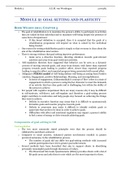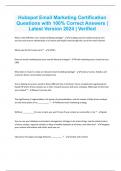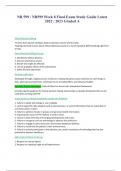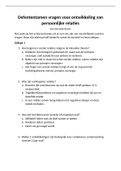Summary
Summary Everything needed to complete quiz 2 'Neuropsychological Rehabilitation' UVT
- Course
- Institution
All the information needed to complete quiz 2 of the course 'Neuropsychological Rehabilitation' at Tilburg University. This summary contains all the articles and book chapters, and also the most important information mentioned in the informative video's.
[Show more]












